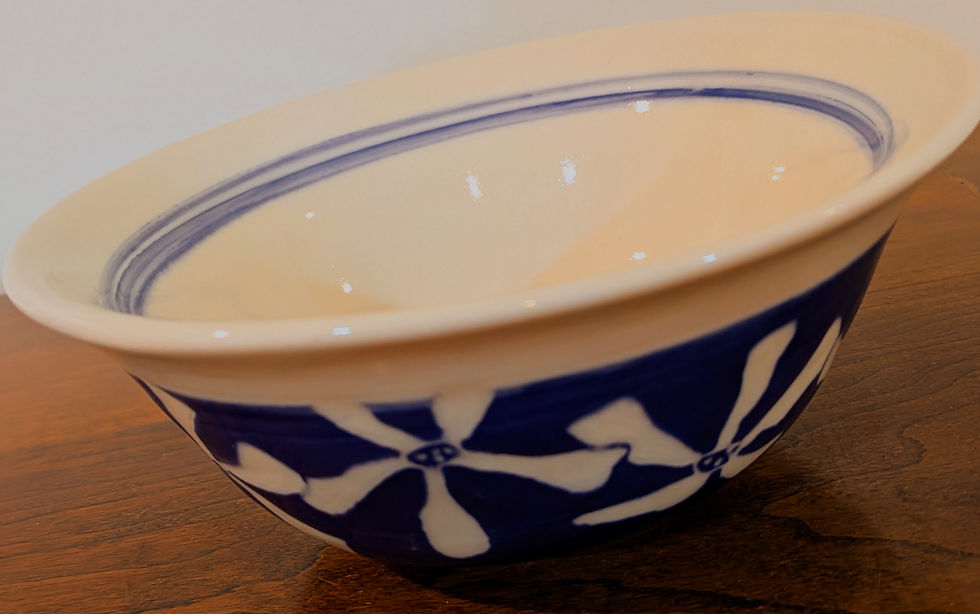Good Energy
- Pam Parziale
- Sep 3
- 2 min read
Updated: Sep 4

Annette Verna Pit Fired Ceramics
The emphasis on nature is intentional. With a background in art history and studio ceramics, Annette says, “It is important to see the connections of where you come from.” She continues, “There is a duty to being an artist, to translate what is going on in the world around us, to communicate the messages of our time.” She talks of the quest for balance, of beauty, concern for the environment, and how to react to global warming. “It’s kinda scary!"
Annette Verna’s origin story begins with earth. “Ever since I was little, little, I made things,” she says. A child’s curious mind loves the feel of dirt between her fingers; Her father, a craftsman, watched his daughter and he made a decision. He took her along to construction sites. The 6 year old was fascinated by the work, the activity, where no one seemed to mind her love of dirt.
Annette was introduced to clay by a teacher open to experimentation. She made raku, a process where bisque pottery is fired quickly in a red-hot kiln, then cooled rapidly as soon as the glaze melts. The pit fired pottery she makes today has similarities to that process, however, the work is sophisticated and complex. She may begin with a wedged lump of clay on a wheel, turned to a hollow bowl, removed and completed using hand building techniques.
“I was introduced to pit fire when I went to art school.” She describes an ancient method of making a pot hard enough for use, to hold food and grain. Annette’s fellow Studio Tour member, Neil Super, keeps her supplied with sawdust and wood chips for her pit fires. Using a simple barbeque cooker and a large metal trash can for kilns, the potter surrounds her pots with leaves, plants, and myriad natural materials. The atmosphere in the kiln becomes smokey and the surface areas of the pots covered with plant material react to the heat in unexpected ways. Every piece is unlike any other.
Annette says she was inspired by an exhibit of women potters at the Women's Museum in Washington DC. “As I looked at those magnificent pots, they seemed to vibrate. I want people to feel there is life, there is that same energy in my pots.”
Connecting with other artists on the Over the Mountain Studio Tour, at Washington Street Clay Studios in Bolivar, the Jefferson Arts Council, and now as a part of West Virginia Tamarack in Beckley, is a further validation of her work. “The energy is good,” she says when talking about the Studio Tour. “We complement each other nicely, it feels good, the energy is good.”
As we walk out into the sunshine, the potter is reflective, and says, “I feel now like I am home.”







Comments